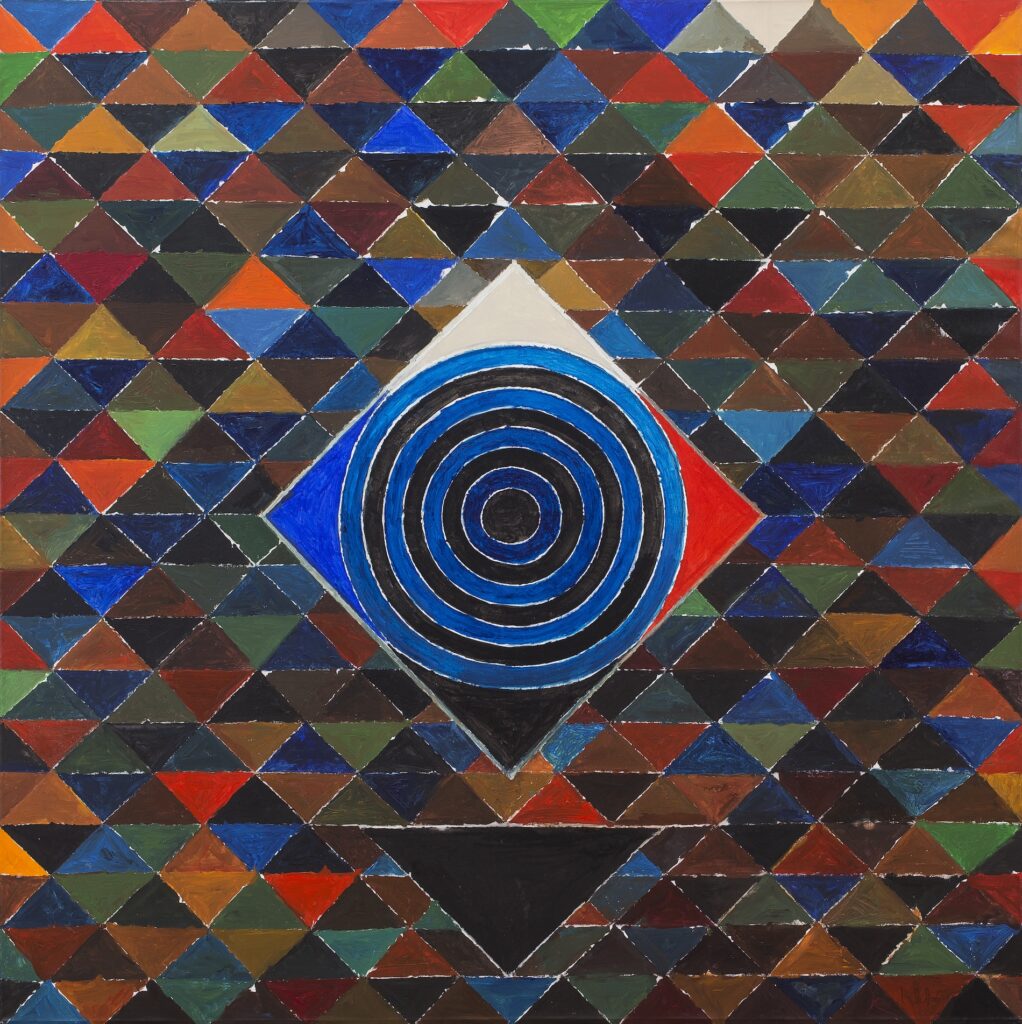Sayed Haider Raza has stated, “sometime between 1975 and 1980, I began to feel the draw of my Indian heritage. I thought: I come from India, I have a different vision; I should incorporate what I have learned in France with Indian concepts. In this period, I visited India every year to study Indian philosophy, iconography, magic diagrams (yantras), an ancient Indian art, particularly Hindu, Buddhist, and Jain art. I was impressed by paintings from Basholi, Malwa, and Mewar, and began combining colors in a manner that echoed Indian miniature painting.” (Raza in conversation with Amrita Jhaveri, Sotheby’s Preview, March/April 2007, p.57).

Titled “Prakriti” or Nature, the painting reflects the artist’s lifelong commitment to depicting nature and its colors in his canvases. Evolving from his initial academic landscapes and abstracted expressionism on the same subject, Raza delved into the purest form of nature. Removing all inessential to attain the simplest interpretation.
He singularly used colors that naturally exist in the visible world, the primary palette of red, blue, yellow, white, and black to represent the fundamental elements in creation – fire, water, earth, sky, and air.
To underscore his non-representative vocabulary and maintain the geometric symbolism that he adopted later in his career, Raza deploys the inverted triangle – symbolic of female sexuality and reproduction with the bindu – symbolic of the seed that bears the potential of new life. Depicted together, they represent the tree of life and the perpetual cycle of nature, of fertilization, germination, growth, reproduction, and ultimately death.
Auction Catalogue – South Asian Art – ‘Modern and Contemporary’ – September 24 – 28, 2020